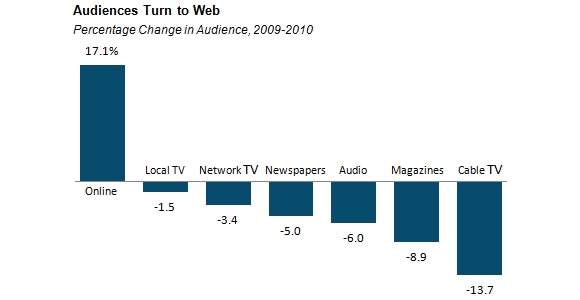Streaming Profits And The Shifting Dynamics Of Entertainment Consumption

Table of Contents
The Subscription Model: The Cornerstone of Streaming Profits
The subscription model remains the cornerstone of streaming profits for many major players. This recurring revenue stream provides a predictable income flow, allowing for long-term planning and investment in content creation and technological advancements.
Subscription Tiers and Pricing Strategies
Different subscription models significantly influence profitability. Streaming services employ various strategies, including:
- Ad-supported vs. Ad-free: Platforms like Hulu offer both ad-supported and ad-free tiers, catering to different consumer preferences and willingness to pay. The ad-supported tier generates revenue through advertising, while the ad-free tier relies solely on subscription fees.
- Basic vs. Premium: Netflix, for instance, uses a basic, standard, and premium tier model, differentiating them based on features like screen resolution, simultaneous streams, and availability of 4K content. This tiered approach allows for price differentiation and maximizes Average Revenue Per User (ARPU).
Examples of successful tiered subscription models: Netflix, Disney+, Amazon Prime Video, HBO Max (now Max). Pricing strategies are highly dynamic, adjusting based on competitive pressures, content costs, and perceived value by consumers. Factors influencing price changes include increases in licensing fees for licensed content, rising production costs for original programming, and competitive pricing strategies from other streaming services.
Churn Rate and Customer Retention
Minimizing churn (the rate at which subscribers cancel their subscriptions) and maximizing customer lifetime value are critical for sustainable streaming profits. High churn rates directly impact profitability, making customer retention a top priority for streaming platforms.
Strategies for improving customer retention:
- Personalized content recommendations based on viewing history and user preferences.
- Exclusive content and original programming not available on other platforms.
- Engaging user interfaces and improved app functionality.
- Regular updates and new feature introductions.
Churn rate analysis provides valuable insights into user behavior, allowing for targeted interventions and improvements to the service. Understanding why users cancel is crucial for implementing effective retention strategies.
Advertising Revenue: A Growing Source of Streaming Income
While subscription revenue remains dominant, advertising revenue is rapidly emerging as a significant contributor to streaming profits. The ability to target ads based on viewer data makes this a highly lucrative avenue for revenue generation.
Targeted Advertising and Data Analytics
Streaming platforms leverage sophisticated data analytics to understand user preferences, demographics, and viewing habits. This allows them to deliver highly targeted advertisements, increasing ad engagement and maximizing revenue.
Examples of successful targeted advertising campaigns: Many streaming services utilize contextual advertising, placing ads relevant to the content being watched. For example, an ad for a car might appear during a car racing show. Data privacy remains a critical concern; compliance with regulations like GDPR and CCPA is paramount to maintaining user trust and avoiding legal repercussions.
AVOD vs. SVOD Models
The profitability of streaming services differs significantly depending on the model adopted:
- AVOD (Ad-supported Video on Demand): Platforms like YouTube and Hulu (with ads) utilize a freemium model, offering free access with ads or a paid subscription for ad-free viewing. ARPU tends to be lower than SVOD, but the broader reach can generate significant advertising revenue.
- SVOD (Subscription Video on Demand): Platforms like Netflix and Disney+ primarily rely on subscription fees for revenue. ARPU is generally higher, but the reach is limited to paying subscribers.
Comparing ARPU across AVOD and SVOD models reveals the trade-offs between reach and revenue per user. Many platforms are exploring hybrid models, combining subscriptions with limited advertising to optimize profitability.
Content Acquisition and Production Costs: A Balancing Act
The cost of acquiring and producing content is a significant factor influencing streaming profits. Streaming giants must carefully balance investment in original programming with licensing costs for existing content.
Original Content vs. Licensed Content
The decision to produce original content versus licensing existing content involves a complex cost-benefit analysis.
Analysis of ROI for original content vs. licensed content: Original content can enhance brand identity, drive subscriptions, and generate significant buzz, potentially boosting long-term profitability. However, production costs for original shows can be extremely high. Licensed content offers a lower upfront investment but may lack the same level of brand differentiation and exclusivity.
Factors influencing content acquisition costs include licensing fees (often dependent on popularity and demand), production budgets (including salaries, location fees, post-production), and marketing expenses.
The Impact of Production Costs on Profitability
The rising cost of high-quality original programming is a major challenge for streaming services.
Examples of high-budget streaming shows and their impact on overall profitability: Shows like The Crown and Stranger Things demonstrate the potential for original content to attract large audiences but require considerable financial investment.
Strategies for managing production costs without compromising quality include optimizing production schedules, utilizing efficient filming techniques, and exploring diverse content formats.
Conclusion: Understanding Streaming Profits for Future Success
Understanding streaming profits requires a multifaceted approach encompassing subscription models, advertising revenue, and a shrewd content strategy. Successfully navigating the complexities of these revenue streams is crucial for long-term success. The future of streaming will undoubtedly involve further innovation. Emerging trends like the metaverse, interactive content, and advancements in AI-powered personalized recommendations will continue to shape the industry, influencing both streaming profit margins and viewing habits.
Understanding the complexities of streaming profits is crucial for anyone involved in or interested in the entertainment industry. Stay informed about the shifting dynamics of entertainment consumption and the innovative strategies employed by streaming giants to maximize their revenue streams. The competitive landscape demands constant adaptation and a deep understanding of what drives successful streaming services.

Featured Posts
-
 Thames Water Executive Bonuses A Closer Look At The Controversy
May 22, 2025
Thames Water Executive Bonuses A Closer Look At The Controversy
May 22, 2025 -
 Voedingsindustrie Afhankelijk Van Goedkope Arbeidsmigranten Analyse Van Abn Amro
May 22, 2025
Voedingsindustrie Afhankelijk Van Goedkope Arbeidsmigranten Analyse Van Abn Amro
May 22, 2025 -
 Oh Jun Sung Wins Wtt Star Contender Chennai Match Highlights
May 22, 2025
Oh Jun Sung Wins Wtt Star Contender Chennai Match Highlights
May 22, 2025 -
 Golovna Nebezpeka Dlya Ukrayini Na Shlyakhu Do Nato Poperedzhennya Yevrokomisara
May 22, 2025
Golovna Nebezpeka Dlya Ukrayini Na Shlyakhu Do Nato Poperedzhennya Yevrokomisara
May 22, 2025 -
 Sejarah Kemenangan Liverpool Di Liga Inggris Peran Para Pelatihnya
May 22, 2025
Sejarah Kemenangan Liverpool Di Liga Inggris Peran Para Pelatihnya
May 22, 2025
